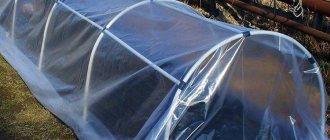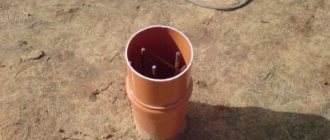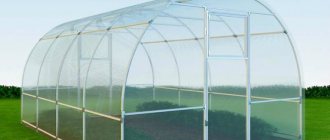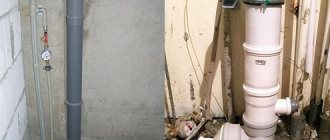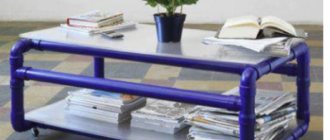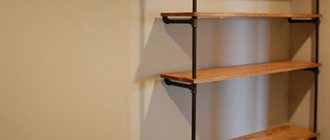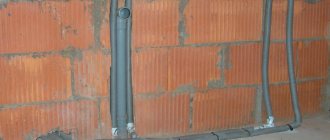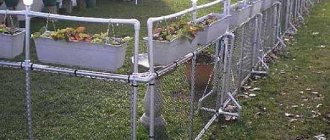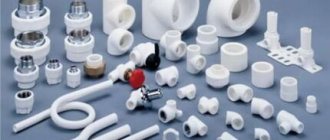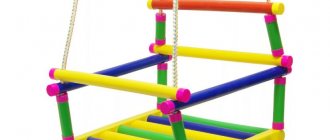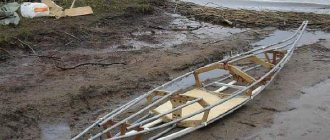PVC is a modern material with many positive qualities. It is quite inexpensive, lightweight, strong, durable, resistant to different climatic conditions and environments. In addition, plastic pipes are easily and quickly connected, ensuring absolute tightness of the joints.
Homemade catamaran made from plastic pipes
Thanks to this, the use of plastic pipes has gained wide popularity not only in the installation of water supply and sewer systems. From these, “traditional craftsmen” use their own hands to make many useful “gimmicks”, ranging from racks and drinking bowls to sleighs and watercraft.
In this article we will tell you how you can quickly and inexpensively make a catamaran from plastic (polypropylene) pipes with your own hands.
DIY bicycle catamaran made from plastic pipes
The long-awaited experiment took place: on the last trip to Kyrgyzstan, instead of the duralumin length of my catamaran that was broken on Tentek, I used polypropylene PN20 40x6.7 mm (unreinforced).
The cat successfully completed the full 6 class route. (river Oy-Tal/Tar, Kekemeren, Maly Naryn) without run-outs, including pores. Ladder and Tura-Goin-2 on Kekemeren (6B) and the Inaccessible complex on Maly Naryn (6B), survived the keel in the Kapchagai breakthrough Tara (6B) with floating upside down, wedging in oversized (ibid.), several less significant pile-ups on the stones. The decision completely justified itself, no difference in behavior was noticed between it and the duralumin pipe, the condition of the pipe did not change during the trip. The advantages of polypropylene pipes over duralumin pipes are as follows: 1. Dynamic strength. Pipe PN20 40x6.7 mm made of polypropylene is more resistant to shock, shock and vibration than 42x1.5 mm made of d16t. Static strength and rigidity are lower - but on longitudinal sections this is not critical, since the necessary longitudinal rigidity of the vessel is provided by the air pressure inside the nacelles. There are catamarans without any lengths at all (the Kulikovo Kazyr, for example), on which rivers of the same level sail.
2. Polypropylene pipe does not need end caps. I scorched the ends of the pipe on a gas stove, slowly rotating the pipe over the fire - they became round and thick, which would negate the “hole punch effect” when crushing the end of the catamaran.
3. Due to the absence of plugs, water does not accumulate inside the pipe. It slowly but surely seeps into the pipe with plugs.
4. Price. I bought a polypropylene pipe PN20 40x6.7x2000 mm at a scrap store for 230 rubles, and amputated the extra 200 mm. A duralumin pipe 42x1.5x2000 mm would cost 800-1000 rubles, and only if it could be found in our city.
There is only one loss: weight. A polypropylene pipe 40x6.7x1800 mm is heavier than a duralumin pipe 42x1.5x1800 mm, by 300 g - this is about 30% of the mass. That is, when replacing all the lengths of the catamaran with polypropylene, the weight of the vessel will increase by 1200 g. But the advantages of the solution, in my opinion, are more significant, so I can confidently recommend it - in any case, to those who find it difficult to get alloy of suitable characteristics.
PS Naturally, such pipes are not suitable for the cross members of a catamaran.
The attached photographs show fragments of the vessel on the slipway, the passage of pores. Tseytot (r. Tar, 6A), port. Staircase (Kekemeren river, 6B), 1st st. village Inaccessible (Maly Naryn river, 6B).
Source
Why a catamaran?
There are a lot of options for watercraft, as well as their purposes. For those who live near bodies of water, and especially for those for whom overcoming a water obstacle is a vital necessity, a catamaran is ideal. This type of vessel has many advantages over kayaks, boats or yachts.
- To make catamarans from plastic pipes, a minimum amount of material is required. In addition, remnants from the recent installation of a sewer or water supply system may well be used;
- the catamaran is light in weight, so it does not cause problems in terms of transportation;
- due to the design features - two cylinders connected by a deck, such a craft has high seaworthiness, strength, reliability and sufficient speed;
- the ability to accommodate the required number of seats;
- Any type of engine can be installed on a catamaran.
What does a catamaran consist of?
The catamaran has a large number of design features compared to other watercraft.
The catamaran is based on large diameter plastic pipes
That is why you need to know its components in detail before starting drawings and installation work.
- The first, and most important, part of the catamaran is the floats. These are two chamber structures located on the sides of the craft. Their immediate task is to keep the ship afloat. Cylinders can be made of different materials that limit the outer perimeter of the float. To do this, use the film from which inflatable cylinders, foam plastic or PVC pipes are made.
- Connecting frame. It can be made of any materials, from the same plastic pipes to wood or metal. The lighter the catamaran frame, the smaller the floats can be.
- Deck. This part is created to accommodate passengers, luggage and other things that will be transported by water.
- Steering wheel. The function of the rudder of any watercraft is performed by an underwater blade, which for movement is directly installed parallel to the movement, and for turning it is bent in one direction or another using a rotary handle brought to the deck.
- Oars, pedals, motor or any other device that propels the catamaran.
VlCT0R 05.12.2011 — 10:58
I was interested in this question: Is it possible to make a frame for a catamaran from polypropylene pipes.
I understand that these pipes have less rigidity than duralumin ones, but in this case it is possible to create not a rigid frame, but an elastic (soft) one. At the same time, the price of the frame will decrease by an order of magnitude.
Approximate diagram of the future frame (for a catamaran-six): - lengths of pipes 25 * 4.2 - 8 pieces of two meters each; - crossbars made of pipes 40 * 6.7 - 6 pieces, two meters each (a frame is made with a larger number of crossbars to unload them from luggage); - connectors for lengths of pipes 40 * 6.7 - 4 pieces per meter (attachment to the lengths is still being thought out).
Since the pipes for the longitudinals have an outer diameter that is 1.6 mm smaller than the inner diameter of the crossbars, during transportation they can be nested one inside the other. In this case, the volume of luggage will be even slightly less than that of a classic frame (with four crossbars). The approximate weight of the frame is expected to be around 17-18 kg (also slightly less than the classic version).
The main question: are there any pitfalls in this version of frame manufacturing?
